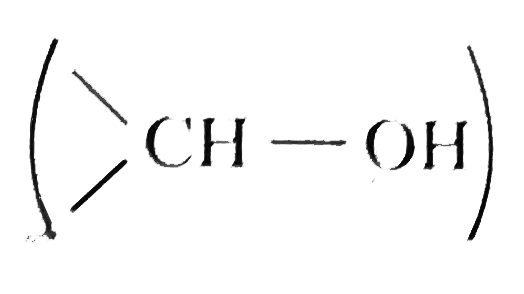
The reagents (A),(B), and (C) are:
A
a.
B
b.
C
c.
D
d.
Video Solution
Text Solution
The correct Answer is:D
(H2+Pt)can reduce both (C=C) bond and (C=O) group, but (C=C) is more reactive than (C=O) towards the reduction, so with 1mol of (H2+Pt), only (C=C) bond is reduced to (C−C) bond. While (H2+Pt) or (H2+RaneyNi) in excess reduce both (C=C) bond to (C−C) bond and

group to

group, NaBH4 reduces only

group to

group, but does not reduce (C=C) bond. So the answer is (d).
|
Topper's Solved these Questions
- REDUCTION AND OXIDATION REACTION OF ORGANIC COMPOUNDSBOOK - CENGAGE CHEMISTRYCHAPTER - REDUCTION AND OXIDATION REACTION OF ORGANIC COMPOUNDSEXERCISE - Exercise (Assertion And Reasoning)
10 Videos
- REDUCTION AND OXIDATION REACTION OF ORGANIC COMPOUNDSBOOK - CENGAGE CHEMISTRYCHAPTER - REDUCTION AND OXIDATION REACTION OF ORGANIC COMPOUNDSEXERCISE - Exercise Archives (Subjective)
26 Videos
- REDUCTION AND OXIDATION REACTION OF ORGANIC COMPOUNDSBOOK - CENGAGE CHEMISTRYCHAPTER - REDUCTION AND OXIDATION REACTION OF ORGANIC COMPOUNDSEXERCISE - Exercise (Multiple Correct)
35 Videos
- QUALITATIVE INORGANIC SALT ANALYSISBOOK - CENGAGE CHEMISTRYCHAPTER - QUALITATIVE INORGANIC SALT ANALYSISEXERCISE - Viva Voce Questions And Part-C (Analysis Of Cations)
42 Videos
- SOLID STATEBOOK - CENGAGE CHEMISTRYCHAPTER - SOLID STATEEXERCISE - Ex 1.2 (Objective)
9 Videos
Similar Questions
Knowledge Check
Identify the correct pathway to convert propanoic acid to ethylamine. The reagent represented by A, B and C are
CH3CH2COOHA−−→XB−−→YC−−→CH2CH2NH2AABCCa(OH)2HeatPt/H2BABCSOCl2NH3Br2/KOHCABCHNO2P+I2LiAlH4DABCHCNNH3Br2/KOH
Reagent (C ) is:AMe2CdBMe2CuLiCCH3IDMe2SO4+NaOH
Reagent (C) is :AO3/Ph3PBO3/NaBH4CO3/H2O2DKMnO4/ΘOH
A→B+C Time 0 t Volume of reagent V1 V2 The reagent reacts with A, B and C. Find k.
View SolutionComplete the following the following missing reagents :

(b)
( c)
(d)
( e) .
.
View SolutionInterconversion of terminal to internal alkyne and vice versa takes place by the following reagents (A) and (B):

Reagents (A) and (B) are:
View SolutionDuring the conversion :
C6H5CH2CH3(a)−−→X(b)−−→C6H5CH=CH2
the reagents (a) and (b) are respectively
View Solution
Which statements are correct for reagents A, B, C, and D?
View Solution

